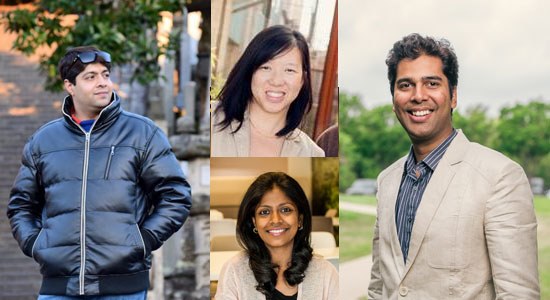A highly-successful business like Dell needs a great business model and strategy, it also needs a great team to develop and deliver it. From a talent perspective, high performance has a strong correlation with good diversity and inclusion practices, and the research is now there to prove it. It makes sense intuitively — people are at their best when they feel included and respected as part of a team. According to a recent CEB global whitepaper, they work harder, are more likely to stay longer with the organization, and collaborate up to 57 percent more effectively.
Dell’s commitment to diversity and inclusion and the opportunity to work cross-culturally and in many different locations is a key part of our Talent Management strategy and supported by our many Employee Resource Groups (ERGs).
“Leaving your own culture and comfort zone is a great opportunity to challenge yourself and learn,” says Manu Mouquet who moved from Paris to Hong Kong. “Dell’s culture is very inclusive, and local teams are very welcoming and supportive.”
Divya Thakur (lower center above) is originally from India and relocated to Slovakia. Before her transition to a new place, her manager encouraged her to spend a week in Slovakia to determine if it was the best move for her.
“Working in a foreign culture has helped me gain ‘cultural competence’ which is no longer a choice but a key skillset in order to accelerate your career,” she says.
Bridging cultural gaps extends to Dell’s learning and development offerings, too. In a heavily-remote and flexible workforce, GlobeSmart is an essential tool to help team members better understand different cultures and work preferences. After completing a quick survey, you can compare yourself on five preference scales from whether your style is direct or indirect to the degree of status and respect you give superiors by virtue of their job titles.
Before relocating to Japan from India, Ritesh Bagdai (above left) underwent culture training that helped him understand what was appropriate and what wasn’t in his new working culture. His colleagues even help translate Japanese correspondence and advise on how best to respond.
Speaking the local language can be quite an advantage when seeking cultural immersion discovered Angeline Tucker (upper center above), an executive director within Dell’s HR organization.
“Being ethnically Chinese, I thought I would have an advantage working in China. And I do, but it’s much less than I expected, especially since I don’t speak the language,” she says. “What is nice is that working in Dell China doesn’t feel too different from working at Dell in the US, a testament to our global nature, although of course there are local cultural nuances.”
For Tejas Gohokar (above right), being of Indian descent and now living and working in France by way of the United States, the notion of a “home country” has always been a little blurry, but that hasn’t stopped him from learning to navigate the local culture.
“Don’t isolate yourself, don’t limit yourself to hanging out with expatriates from your home country – immerse yourself to the full extent possible in the local culture,” he encourages. “It will be an infinitely enriching experience!”
 Anna VanderBroek (left), a US Citizen currently residing in Mexico City, shared that “food is a big part of the culture in Mexico and the comida (meaning “food” or “lunch” in Spanish) is a respected meal, even during a work day. It is a time when colleagues eat together and give updates about friends, family and, of course, work.” She credits the enforcement of comida with allowing her to acclimate quickly to the new culture she works in.
Anna VanderBroek (left), a US Citizen currently residing in Mexico City, shared that “food is a big part of the culture in Mexico and the comida (meaning “food” or “lunch” in Spanish) is a respected meal, even during a work day. It is a time when colleagues eat together and give updates about friends, family and, of course, work.” She credits the enforcement of comida with allowing her to acclimate quickly to the new culture she works in.
So, in honor of World Day for Cultural Diversity, #DoOneThing to help your colleagues and friends feel welcome. What will you do to help someone settle into a new culture?
